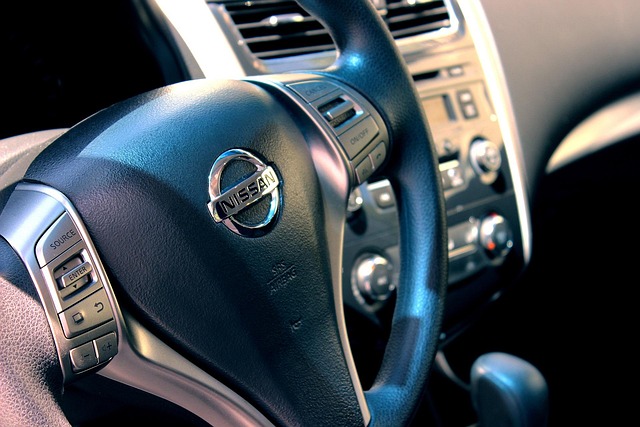Looking to register your car in California? This guide walks you through the entire process, ensuring a smooth transition. From understanding essential requirements to navigating the Department of Motor Vehicles (DMV), you’ll learn what documents are needed for successful VIN verification. We break down each step, from performing a Vehicle Identification Number (VIN) check to receiving and maintaining your California registration papers. Get ready to hit the road legally!
- Understand California Car Registration Requirements
- Gather Necessary Documents for VIN Verification
- Perform Vehicle Identification Number (VIN) Check
- Submit Application and Fees to Department of Motor Vehicles (DMV)
- Receive and Maintain Your California Registration Papers
Understand California Car Registration Requirements

Before registering your car in California, it’s crucial to understand the state’s specific requirements for vehicle registration. One key aspect is ensuring the Vehicle Identification Number (VIN) is verified accurately. This process, often referred to as VIN inspection or VIN verification, plays a vital role in maintaining accurate records and preventing fraud. In California, this typically involves checking the VIN against official databases to ensure it matches the vehicle’s make, model, year, and other specifications.
During the registration process, you may be required to undergo a mobile VIN inspection or mobile VIN verification, where a designated official checks your car’s details at your location. This convenient service streamlines the registration process, especially for folks with busy schedules or limited mobility. Understanding these requirements beforehand will help ensure a smooth and efficient car registration experience in California.
Gather Necessary Documents for VIN Verification

Before heading to the California Department of Motor Vehicles (DMV) or any authorized agent for registration, ensure you have all the required documents for a successful vin verification. This process is crucial for establishing the vehicle’s identity and history. Gather the following:
1. A valid driver’s license or state-issued ID card.
2. The vehicle’s vin (vehicle identification number), which can be found on the front of the dashboard or in the owner’s manual.
3. Proof of ownership, typically a bill of sale or previous registration documents.
4. For classic cars or those with unique circumstances, you might need additional paperwork, so check the DMV guidelines.
Additionally, considering a mobile vin inspection or using a mobile vin verifier can be advantageous, as these services offer on-site convenience and instant results, making the registration process more efficient.
Perform Vehicle Identification Number (VIN) Check

Before you begin the registration process, it’s crucial to perform a Vehicle Identification Number (VIN) check. This step is essential for ensuring that your car’s details match its actual identity and preventing any potential fraud or theft. A VIN verification is a critical component of vehicle registration in California, as it helps to maintain the integrity of the state’s record-keeping system.
Conducting a VIN inspection, whether through a mobile vin verification service or at a registered inspection station, involves cross-referencing your car’s unique VIN with multiple databases to confirm its history and current status. This includes checking for any outstanding loans, accidents, or reported thefts, which could impact both the registration process and the vehicle’s overall value. By ensuring accurate VIN information, you set the stage for a smooth and legitimate registration experience in California.
Submit Application and Fees to Department of Motor Vehicles (DMV)

Once you’ve gathered all necessary documents and information, it’s time to submit your application along with the required fees to the California Department of Motor Vehicles (DMV). This crucial step involves filling out a vehicle registration form, providing proof of insurance, and submitting your Vehicle Identification Number (VIN) for verification. The VIN is a unique code that identifies your car, and this process ensures the accuracy of the information associated with it.
A key aspect of this submission is the vin inspection, which can be conveniently handled by utilizing mobile vin inspection services. These services offer a quick and efficient way to verify your vehicle’s details, ensuring a smoother registration process. Alternatively, you can conduct a basic vin verification online or through official DMV resources to cross-check the information before submitting your application.
Receive and Maintain Your California Registration Papers

After submitting your application for car registration, you’ll receive your California registration papers. It’s crucial to keep these documents secure and up-to-date. Your Registration Certificate and Proof of Insurance are essential pieces of paperwork that must be retained in your vehicle at all times. Additionally, ensure you have accurate records of any transactions or changes related to ownership or the vehicle’s condition.
A mobile vin verifier can facilitate this process by providing a quick and convenient way to verify your vehicle identification number (VIN) during the registration or renewal period. This ensures that your car’s details are accurately reflected in the state database, streamlining the registration process and enhancing the overall efficiency of maintaining your California registration papers.
Registering a car in California involves understanding key requirements, gathering essential documents for VIN verification, conducting a vehicle identification number (VIN) check, submitting applications and fees to the DMV, and maintaining your registration papers. This process ensures your vehicle complies with state regulations, facilitating smooth operations on California’s roads. Remember to stay organized and accurate throughout, as proper vin verification is crucial for a seamless registration experience.
